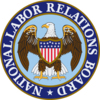By Tim K. Garrett & Hunter Yoches
The National Labor Relations Board (NLRB) recently issued a final rule setting forth a new standard for joint-employer status under the National Labor Relations Act (NLRA). The new rule, which the NLRB recently voted to delay by two months and is now set to go into effect on February 26, 2024, drastically broadens the scope of who can be considered a joint employer under the NLRA.
Background
In 2015, the Obama NLRB issued its decision in Browning-Ferris Industries of California, Inc., which overturned years of precedent by dramatically expanding the definition of joint employer and resulting in many more independent companies being treated as joint employers. Under this decision, two entities could be deemed to be joint employers based only on the existence of reserved joint control, indirect control, or control that was limited and routine. This decision had a potentially broad impact on, for example, franchisors who exercised operational control over franchisees and, thereby, control over the employees of such franchisees.
In 2020, the Trump NLRB issued a rule backing off the Browning-Ferris Industries decision and signaling that joint-employer status would be found only where a company exercises “substantial direct and immediate control” over the essential terms and conditions of another company’s employees.
New Rule
The new rule issued by the Biden NLRB not only overturns the Trump NLRB’s rule but also broadens the standard announced in the Browning-Ferris Industries decision. This new rule does bring back the “indirect, reserved” control standard and also provides that indirect or reserved control standing alone will establish joint-employer status, even if not exercised, thus expanding the Browning-Ferris Industries standard.
According to an NLRB press release: “Under the new standard, an entity may be considered a joint employer of a group of employees if each entity has an employment relationship with the employees and they share or codetermine one or more of the employees’ essential terms and conditions of employment, which are defined exclusively as: (1) wages, benefits, and other compensation; (2) hours of work and scheduling; (3) the assignment of duties to be performed; (4) the supervision of the performance of duties; (5) work rules and directions governing the manner, means, and methods of the performance of duties and the grounds for discipline; (6) the tenure of employment, including hiring and discharge; and (7) working conditions related to the safety and health of employees.”
The release further states that under this new standard, it will be easier for the NLRB to impose joint-employer findings: “[T]he 2023 rule considers the alleged joint employers’ authority to control essential terms and conditions of employment, whether or not such control is exercised, and without regard to whether any such exercise of control is direct or indirect. By contrast, the 2020 rule made it easier for actual joint employers to avoid a finding of joint-employer status because it set a higher threshold that a putative joint employer must ‘possess and exercise . . . substantial direct and immediate control’ over essential terms and conditions of employment, which has no foundation in common law.”
Most notable is the impact that this rule may have on franchisors and businesses that use staffing agencies. A franchisor or staffing agency user may be required to negotiate with unionized workers under the NLRA when it controls their pay, benefits or other key job terms. This applies whether the alleged joint employer wields that power itself or through another entity, such as a staffing agency, and whether it has used that power or merely retains the authority to use it.
Takeaway
This new rule will significantly increase the number of entities that may be deemed joint employers. With such a determination, those business will end up sharing responsibility for complying with the NLRA as relates to those “joint” employees, including sharing risk for unfair labor practices and sharing responsibility to recognize and bargain with a union representing those employees. Accordingly, employers should immediately begin to review their business practices in light of this new standard.
Please contact the authors if you have any questions about this latest development.

Bass Berry & Sims
tgarrett@bassberry.com
www.bassberry.com

Bass Berry & Sims
hyoches@bassberry.com
www.bassberry.com
